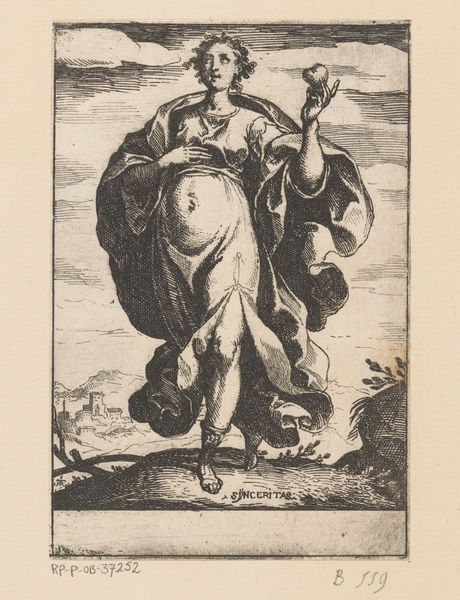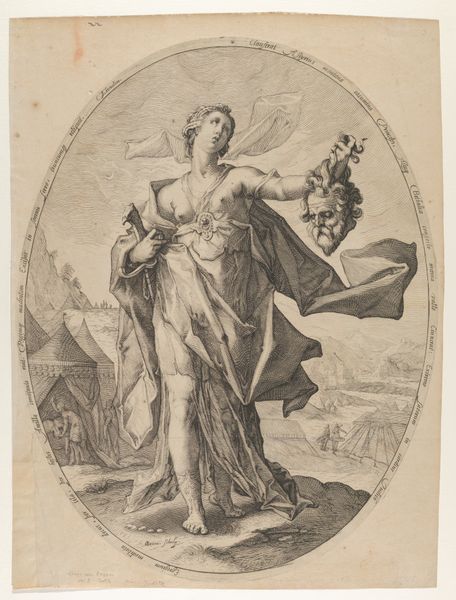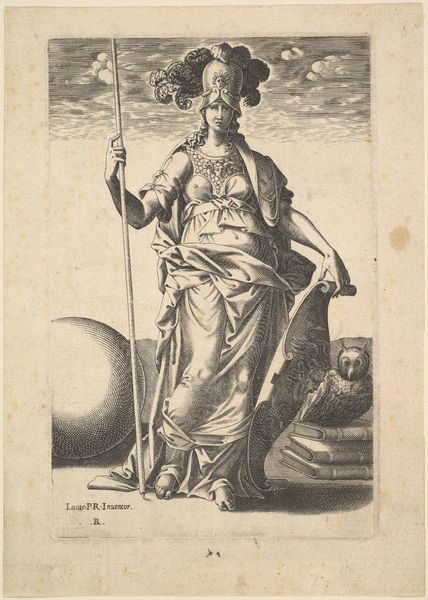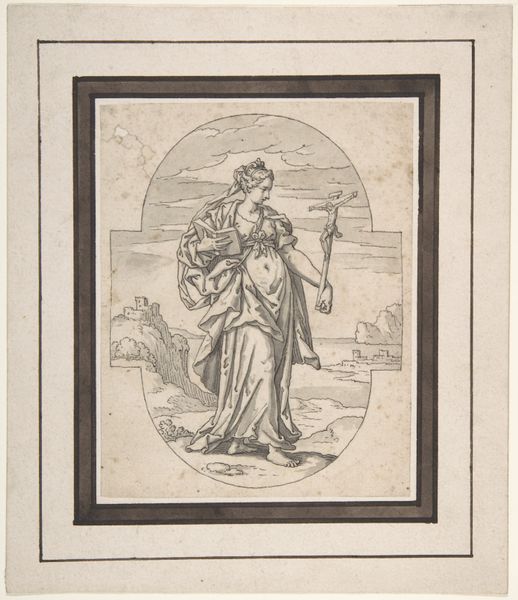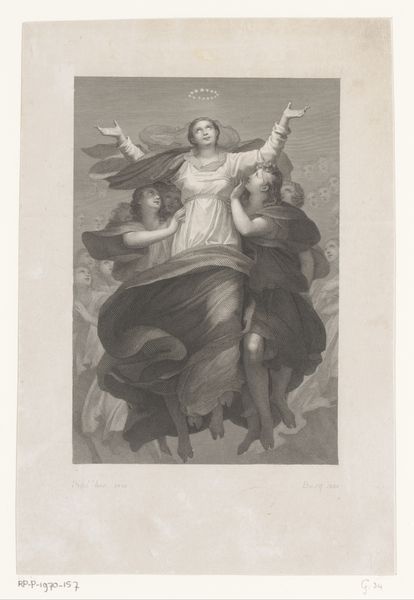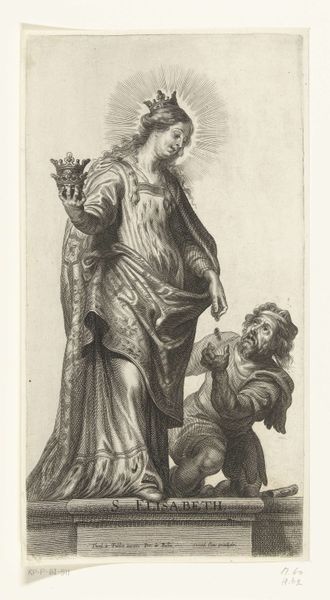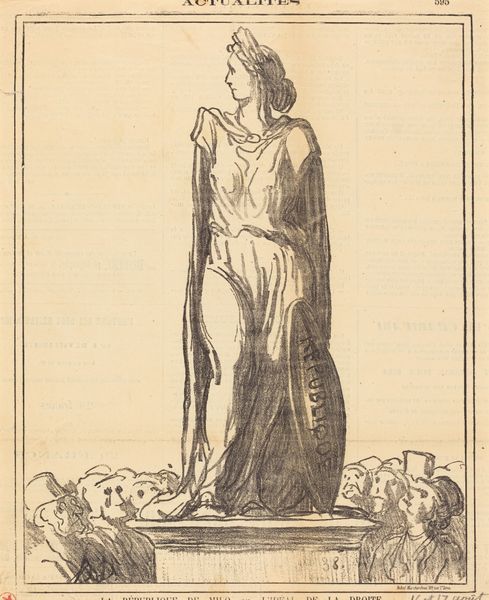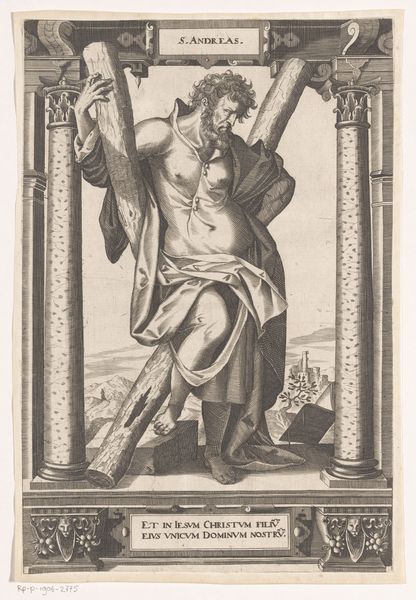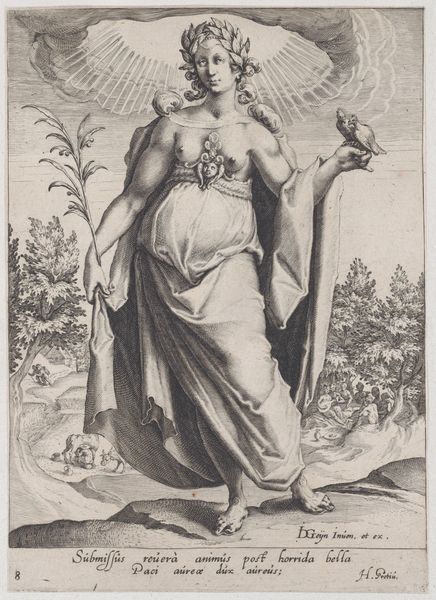
print, etching
#
baroque
# print
#
etching
#
old engraving style
#
landscape
#
figuration
#
limited contrast and shading
#
genre-painting
#
remaining negative space
Dimensions: height 215 mm, width 144 mm
Copyright: Rijks Museum: Open Domain
Editor: We’re looking at "Boerin met een mand fruit en een mand met kippen," made between 1626 and 1628 by Abraham Bosse. It's an etching, so it’s quite detailed despite being black and white. What strikes me is the balance he achieves with just a single figure and the landscape, there’s so much clarity. What do you see in this print? Curator: Immediately, I’m drawn to the meticulous rendering of the lines, the way Bosse uses hatching to create subtle variations in tone. Note how the fabric of her gown folds and drapes; it’s not just representational, but explores the essence of fabric itself. Are you seeing how the composition leads our eyes through the scene? Editor: I am, starting with the figure then moving towards the village in the background. The composition also plays with implied lines. For example, the gaze of the figure seems to follow the road to the village? Curator: Precisely! Furthermore, the artist explores contrast by setting the rugged cliffs on the left of the print against the smooth lines of the sky. It also explores binaries, city and country, smooth and coarse. And what do you observe about the limited tonal range and its impact on the work’s overall effect? Editor: Well, the remaining negative space emphasizes the figure. It seems almost like it accentuates the lines used in the composition? It keeps the overall piece from becoming muddied or heavy. It’s interesting that the limited contrast actually adds clarity. Curator: Exactly. Bosse’s work stands as a testament to the power of line and composition and also highlights how the relationship between these formal qualities can convey not just a subject, but a deeper understanding of form itself. Editor: I see that now; by isolating these formal qualities, Bosse invites us to appreciate the printmaking artistry of the 17th century.
Comments
No comments
Be the first to comment and join the conversation on the ultimate creative platform.
